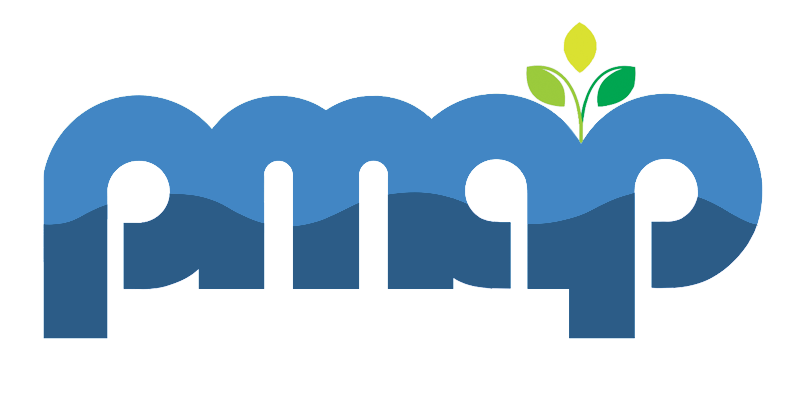Frequently Asked Questions
Everything You Need to Know About PMAP
How effective is PMAP at removing contaminants from mine water?
Independent testing confirms PMAP’s magnesium-based reagent precipitates metals such as cobalt, nickel, and copper to below detection limits in acidic and neutral waters. Results are validated through pilot projects.
What is the neutralization time for acidic water?
PMAP’s reagent reacts gradually, allowing controlled neutralization without overshooting pH. This slower profile minimizes shock loading and creates safer, predictable treatment when paired with our AI-powered Unmanned Smart Dispensing Vessel (USDV).
How is gypsum formation prevented?
The reagent selectively precipitates metals without reacting with sulphates, avoiding gypsum buildup and producing denser, easier-to-handle sludge.
How does the reagent support metal recovery?
PMAP combines selective precipitation with flocculent action, aggregating cobalt, nickel, and copper into concentrated sludge suitable for recovery.
What metals are typically recovered?
Cobalt, nickel, copper, and in some cases zinc. Recovery depends on site-specific chemistry, confirmed through lab or pilot testing.
How is discharge pH stabilized?
The reagent naturally buffers treated water between pH 6.0 – 8.5, reducing overshoot and avoiding secondary chemical adjustments.
Can PMAP treat active ponds with inflows and outflows?
Yes. We design adaptive maintenance dosing programs for continuously fed ponds, ensuring compliance without permanent plant infrastructure.
Can PMAP treat active ponds with inflows and outflows?
Yes. We design adaptive maintenance dosing programs for continuously fed ponds, ensuring compliance without permanent plant infrastructure.
How does PMAP reduce CAPEX and OPEX compared to lime treatment?
PMAP’s in-situ system eliminates the need for fixed plants, tanks, and pumping infrastructure. Operating costs are reduced by:
- Lower reagent consumption
- Reduced labour requirements
- Minimal power needs
What indirect savings can be expected?
Mines benefit from smaller sludge volumes, lower disposal costs, safer reagent handling, faster mobilization, and reduced risk of regulatory penalties.
Can PMAP provide ROI calculations?
PMAP provides technical data on reagent use, sludge volume, and manpower needs. This can use this data to model site-specific financial outcomes.
Does PMAP require a water treatment plant permit?
No. Treatment occurs directly in the pond using mobile, unmanned vessels, simplifying permitting compared to conventional plants.
What permits are required to operate vessels?
On private mine sites, operations usually fall under existing approvals. PMAP assists clients in clarifying requirements with regulators.
Does the system reduce permitting timelines?
Yes. The low-footprint, in-situ design reduces infrastructure complexity and often shortens review periods.
Does PMAP provide compliance documentation?
Yes. We supply water quality results, dosing protocols, and operational data for regulatory submissions.
How is compliance demonstrated during reviews?
Lab-scale or pilot tests are completed before full deployment, providing evidence of expected outcomes.
Does PMAP meet discharge standards?
Yes. Treated water consistently meets Canadian Environmental Quality Guidelines and equivalent international standards.
How does PMAP reduce site risk?
In-situ treatment minimizes large water transfers, infrastructure failure, and worker exposure.
How does PMAP improve ESG performance?
The reagent is non-hazardous, reduces CO₂ footprint, avoids hazardous chemical transport, and cuts sludge volume by up to 70%.
How does in-situ treatment lower environmental risk?
By avoiding permanent plants and large reagent storage, PMAP reduces risks of spills, tailings dam breaches, and high-volume transfers.
What is the PMAP treatment methodology?
1. Digital twin modeling of the pond
2. Site-specific treatment plan
3. Slurry preparation with reagent
4. Precision dosing via AI-guided USDVs
How does the USDV adapt to site conditions?
The USDV uses AI, RTK GPS, and real-time sensors to adjust dosing dynamically for consistent results.
Can PMAP handle both small ponds and large pit lakes?
Yes. The modular system scales from <1 hectare to >100 hectares. Deployment strategies are tailored to site size and access.
How does it adapt to water chemistry fluctuations?
Dosing rates are continuously adjusted using real-time sensor feedback.
How is the reagent formula customized?
Site chemistry is analyzed, and the reagent blend is tailored for maximum performance.
How does PMAP reduce sludge handling costs?
The process produces smaller, gypsum-free sludge volumes, reducing dewatering, transport, and disposal costs.
What is the typical metal concentration in sludge?
Typically 5–20%, depending on site chemistry, often sufficient for commercial recovery.
Can recovered metals be monetized?
Yes. PMAP sludge often contains cobalt, nickel, or copper suitable for recovery and refining, creating potential secondary revenue.
What experience does PMAP have in mining water treatment?
Our team has decades of engineering and environmental expertise with multiple successful Canadian mine site deployments.
Can you share case studies?
Yes. Case studies show contaminant reduction to below detection limits and major reductions in sludge handling costs.
What support is provided after implementation?
PMAP offers remote monitoring, performance audits, and ongoing optimization of dosing strategies.
What is PMAP’s R&D focus?
Ongoing research targets enhanced reagent formulations, improved AI navigation/dosing, and new methods of sludge valorization.
Are new partnerships planned?
Yes. We collaborate with mining companies and universities to expand treatment applications and improve cost-effectiveness.
